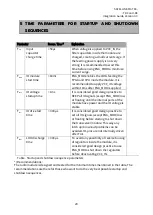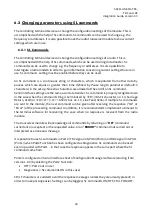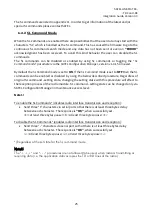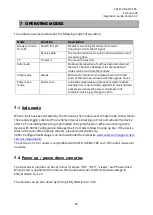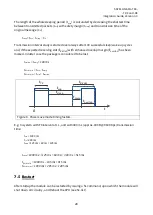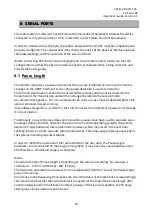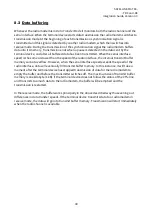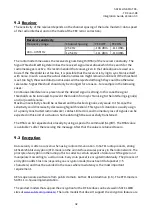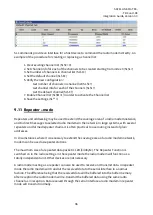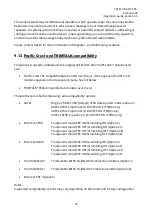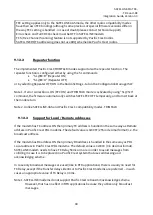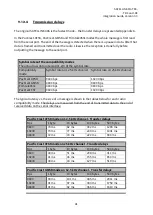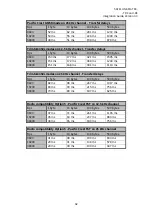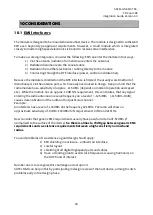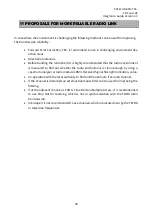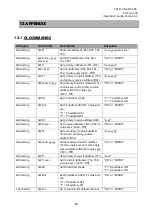
SATELLINE-M3-TR3,
–
TR4 and -R4
Integration Guide, Version 3.0
32
9.2
Receiver
The sensitivity of the receiver depends on the channel spacing of the radio modem (=data speed
of the radio interface) and on the mode of the FEC (error correction).
Receiver sensitivity
Frequency range
Channel Spacing
FEC OFF
FEC ON
403
–
473 MHz
25 kHz
-108 dBm -111 dBm
12.5 kHz
-111 dBm -114 dBm
The radio modem measures the received signal strength (RSSI) of the receiver constantly. The
Signal Threshold setting determines the received signal level above which the search for the
radio messages is active. It is recommended that values given in the table above are used as a
basis. If the threshold is set too low, it is possible that the receiver is trying to synchronise itself
with noise. In such a case the actual data transmission might remain unnoticed. If the threshold
is set too high, the weak data transmissions will be rejected although they could be otherwise
receivable. Signal threshold should only be changed for a reason - for example in the following
cases:
Continuous interference is present and the desired signal is strong. In this case the signal
threshold can be increased to prevent the modem from synchronising to the interfering signal(s)
and /or possible noise.
Maximum sensitivity should be achieved and the desired signal is very weak. In this case the
sensitivity could increase by decreasing Signal threshold. This type of situation is usually a sign
of a poorly constructed radio network / contact. Bit errors and momentary loss of signals can be
expected in this kind of a situation. Some data might be successfully transferred.
The RSSI can be requested also locally by using a special SL command (SL@R?). The RSSI value
is available 7s after the receiving the message. After that the value is returned to zero.
9.3
Encryption
Data security is often a concern when using radio communication. In SATEL radio products, strong
AES128/256-bit encryption (CTR-mode) on the air interface ensures privacy in the radio network. The
principle of encryption in the radio path is to collect a certain amount of data to a shift register and
manipulate it according to a certain rule. Every data packet is encrypted individually
. The process of
encryption adds
5 to10 ms (depending on encryption mode)
to each sent data packet (<5
characters) and must be avoided in the cases where low latency is the most important
requirement.
AES is open source software from public domain. Author: Brian Gladman (U.K). The CTR-mode is
SATEL’s in
-house implementation.
The product models that support the encryption for the RF interface can be viewed in SATEL WEB
sites at
. The radio models that doesn
’
t support the encryption feature are



